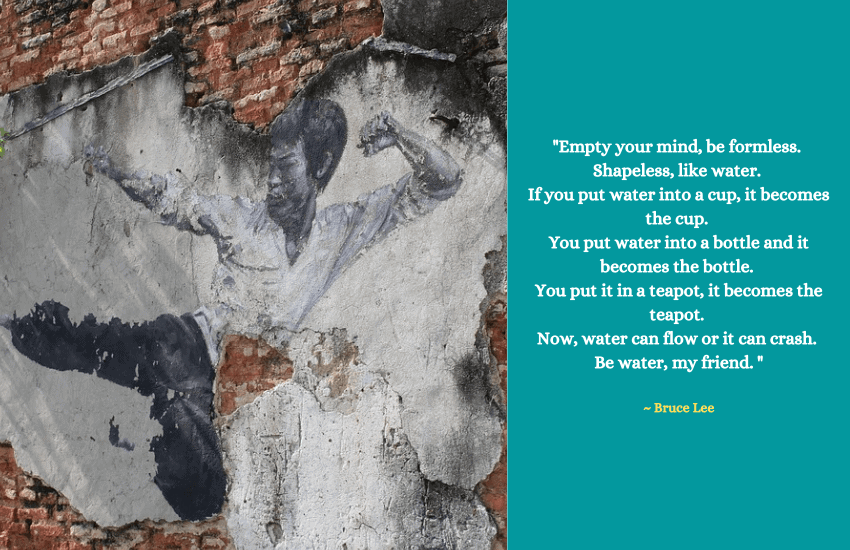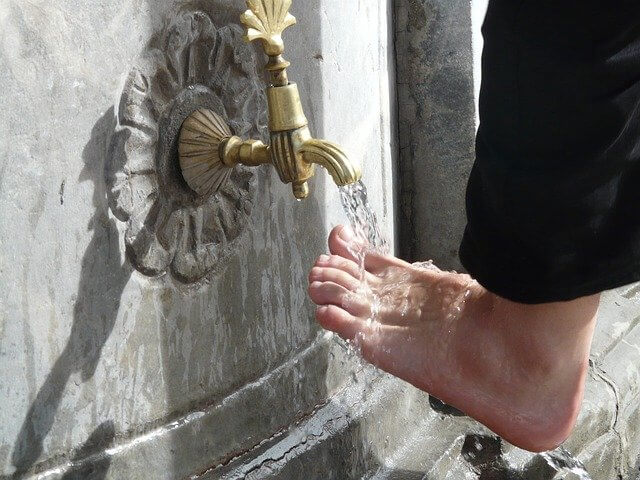
Table of Contents
Water symbols are as ancient as humankind and have been around for thousands of years. They are deeply connected with all cultures, not just as a symbol of survival, but as a mystical element paving the way for life. Water symbols are the chief element in many spiritual rituals and reflect rejuvenation, purification, and healing. However, this is just a summary. Let’s take a closer look at water symbolism and symbols.
Symbolic Meanings of Water

Water has specific representations in various cultures and religions. But it also has general significations that are common to all. Let’s take a brief look at some of the prevalent meanings of water.
- Symbol of Life: Many people across the globe believe water is a symbol of life because it’s closely associated with birth and rejuvenation. It’s both a symbol of physical and spiritual birth. A baby can only be born after the mother’s water breaks, and likewise, spiritual regeneration is only possible after individuals have cleansed themselves.
- Symbol of Change: Water is commonly depicted as a symbol of change due to its flow and movement. It’s never constrained to one location, and it changes its form to become a river, waterfall, sea, or ocean. This constant movement of water is often used by saints and holy people to inspire humankind to adapt to changes instead of fearing them.
- Symbol of the Unconscious: Many psychologists and psychiatrists have used the symbol of water to represent the unconscious mind. The ocean is as vast and deep as the unconscious mind, and its bottom can’t be easily discerned. The ocean is also much larger than the conscious realm, which is easily visible and understandable.
- Symbol of Femininity: Water bodies such as the ocean have been associated with femininity and womanhood. They symbolize rawness, mysteriousness, vastness, and irrationality.
- Symbol of Purification and Forgiveness: Water is used to cleanse oneself, which makes it a symbol of purification. On a spiritual level, this association makes it a symbol of forgiveness, especially in Christianity, as a person’s sins are washed away by water baptism.
- Symbol of Flexibility: Water moves easily, adapting its form to suit its environment. In this way, water is often used as a symbol of flexibility.
Common Water Symbols

Water is represented and depicted through symbols and images. Some of the common ones will be examined in the list below.
- Curvy Lines: Water is often represented by two curvy and squiggly lines. The Native Americans used this to symbolize moving water.
- Inverted Triangle: The inverted triangle was used by early Greek philosophers and alchemists as a symbol of the water element.
- Vertical Lines: In ancient China, water was symbolized by vertical lines surrounded by dots on either side.
- Wavy Lines/Spirals: Many tribal communities such as the Navahos and Hopi used wavy and spiral-like illustrations to depict water.
- Crab, Scorpion, and Fish: The Astrological symbols associated with Cancer, Scorpio, and Pisces, are Crab, Scorpion, and Fish. The Crab represents the rejuvenating and reviving aspects of water while Scorpio symbolizes the still and mysterious features. On the other hand, Pisces reflects wisdom, knowledge, and infinity.
Water Symbolism in Ancient Cultures
Water has been an integral part of every ancient culture, and no wonder, as it’s the essence of life itself. However, apart from its practical use, water has also held mystical, symbolic meaning to almost every culture.
Native Americans
Native American tribes had different meanings and interpretations of water, but they all agreed that it was something to be honored, revered, and cherished.
In the creation myth of the Lakota people, water was a symbol of purification and nourishment. According to this tale, the creator of the world sent a flood to cleanse and restore the planet. All animals perished, but the crow remained and persuaded the creator to rebuild the land. For this purpose, marine creatures were requested to bring mud from the depths of the ocean.
However, the land was very dry couldn’t be inhabited by living creatures. To nourish the land, the creator shed his very own tears. This myth is commonly found in various Native American cultures and represents water as an emblem of purification and nourishment.
Ancient Greeks
In Ancient Greek mythology, water was a symbol of power and invincibility. One of the best examples of such powerful water relates to the River Styx.
The River Styx possessed many mystical properties that were both awe-inspiring and fearsome. Achilles, one of the greatest Trojan heroes, had been dipped in the Styx River when he was a young boy, which made him invincible like the gods. However, as his heel hadn’t touched the water, this became his weak point and the cause of his eventual death (hence the term Achilles’ heel).
The Styx River was also the place where divine Olympian deities made their Oaths. If any of the Gods refused to comply with their promise, they were to face the harshest punishment from the river’s waters.
Taoism
In Taoism, water was a symbol of humility, virtue, benevolence, and strength. Tao Te Ching the ancient founder of Taoism compared water with the highest goodness and virtue. According to him, water fulfilled its purpose without any pride and traveled to the lowest points on earth. It also expressed its benevolence by indiscriminately providing for all living creatures.
But the water wasn’t only soft and kind but also tough and resilient. It could withstand any obstacles, rocks, or metals that came it’s way, and flowed right on. Water served as a great example of how human beings could lead their lives both as benevolent and assertive souls.
Water Symbolism in Religions
There’s no denying the importance of the symbolic meanings of water in religions across the world. Water features prominently in most religions, representing various symbolic roles.
Christianity

In Christianity, water is a symbol of transformation, purification, and destruction. Jesus Christ was able to transcend beyond the material world by performing miracles with water, transforming water into wine, and even walking on water.
Water was also a symbol of purification in Christianity, and the process of Baptism stood as a testament to this. When an individual got baptized, they were submerged in holy water to purify their mind, body, and souls. By doing this, the individual could connect with God at a deeper level. It represented a washing away of sins and wrongdoings, and being bathed in God’s forgiveness.
The Bible also describes water as a tool for cleansing and destruction. In the book of Genesis, God sent a flood to destroy everything and return the earth to its former state free from the evils of humans. When this happened, everything became a watery mass, but thanks to Noah’s virtue, he, his family and a pair of every animal were saved.
Islam

In Islam, water is a symbol of birth, life, healing, and purification. All living creatures originated from water, and rainwater was sent by God to cleanse and purify earth.
Additionally, Allah revealed the Zam Zam Well to Hagar, in order to save her infant son from thirst. Even today, the Well remains among the holiest places in Islam, and is believed to heal people from illness and disease.
Water is also a symbol of purification. Even today, Muslims cleanse themselves with water before praying.
Hinduism

In the Hindu religion, water is the most important symbol of spiritual cleansing and purification. The river Ganges, which is said to flow from the head of Shiva, was personified as Goddess Ganga and contained many mystical powers and energies.
The Ganges River was a vehicle for transporting one’s soul to heaven, and many cremations happened along its banks. Water from the Ganges river was also used to wash away one’s sins and begin afresh.
In one Hindu creation myth, the universe was a wide expanse of water, from which Vishnu, the deity of preservation was born. He and Brahma together helped in the creation of the world.
Water in Art, Photography, and Music
Many artists, photographers, and musicians have sought inspiration from nature. As a major element of the world, water was one of their greatest sources.
- Many of Claude Monet’s most famous paintings included water, such as his series showcasing his water lily pond and the Japanese footbridge.
- Photographer Andrew Davidhazy has become famous for his images on water droplets and cups.
- Franz Liszt composed individual pieces on water, inspiring many musicians to use it as a common theme in their songs.
Quick Facts About Water
In contemporary times, water doesn’t have the same meaning and significance as it did in ancient society. Nowadays, water is mostly associated with relaxing and recreational activities. People love to go on a seaside vacation or visit a spa to be rejuvenated and healed. But most importantly, long baths and showers have become the easiest and most practical way to feel refreshed.
Today, water is a precious, natural resource that is depleting at an alarming rate. This is why it’s essential to be aware of ways to save water, follow sustainable practices, use water-saving products, and reduce and reuse water as much as possible.
In Brief
Water and water symbols have been an integral part of ancient societies and cultures. It remains one of the most important elements of nature, and one that continues to hold its importance, both as a physical object and as a symbolic representation of various universal concepts.








